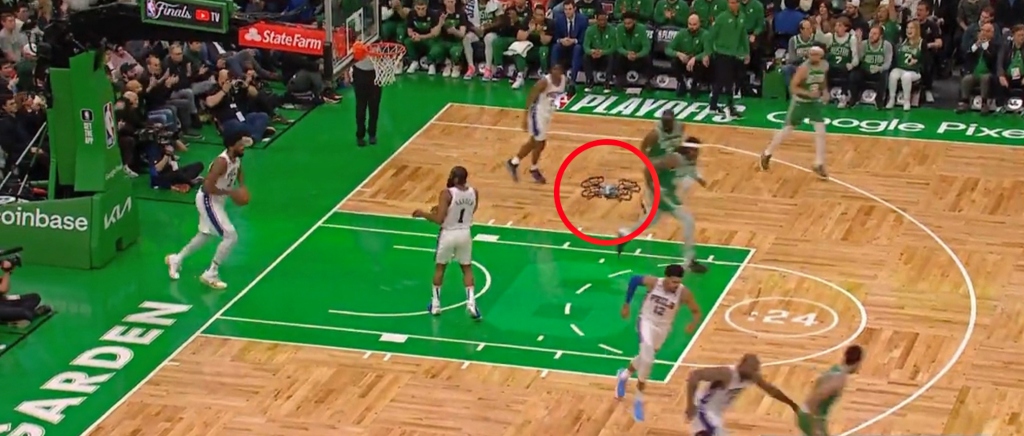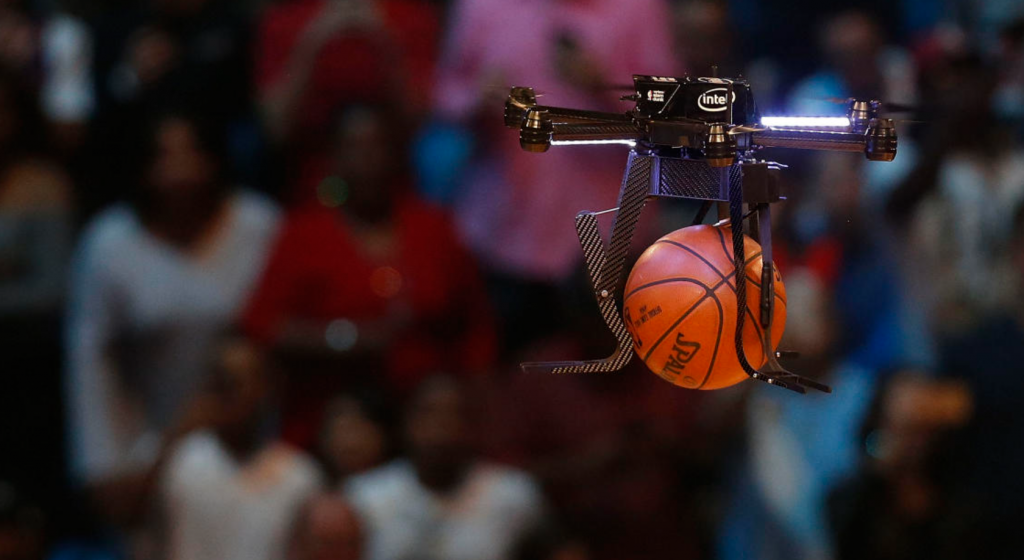Author: Monojit Mandal
Fans had mixed feelings about TNT’s experimental use of drones during Game 2 of the Celtics-Sixers series. While some of the fans thought it was “cool”, the flying camera annoyed and distracted others too.
TNT’s use of drones follows in the footsteps of ABC and CBS, both of which have used them for NCAA basketball broadcasts. Although drones provide a unique perspective on the game, they also raise concerns about distraction and image quality.

The drone was visible to fans at the TD Garden all night, as it flew back and forth across the pitch during the game. Fans in the upper sections were particularly angry and posted real-time videos of the drone. While viewers watched a mixture of different shots and angles, alternating between the standard HD cameras and the lower quality drone camera.
Although the drone was useful for certain replays, the live shots didn’t seem to be beneficial. Fans took to social media to express their discontent with the intrusive presence of the drone and the inferior quality of the image it provided.
It is unclear whether TNT would employ drones again in its playoff broadcast, considering that the broadcaster has a rights-sharing agreement with ESPN. The NBA playoffs have always provided a platform for broadcasters to test new technologies and tactics, and it is possible that other networks will also use drones in future broadcasts.

Overall, drones in sports broadcasting are still an evolving technology, and it remains to be seen whether they will become a permanent fixture in future broadcasts. For the time being, fans are divided on the subject, with some appreciating the new perspective and others thinking it’s an unnecessary distraction.
A potential advantage of deploying drones in sports broadcasting is the possibility of acquiring previously unattainable angles. This can provide viewers with a more immersive experience, as well as a different point of view on the event.


